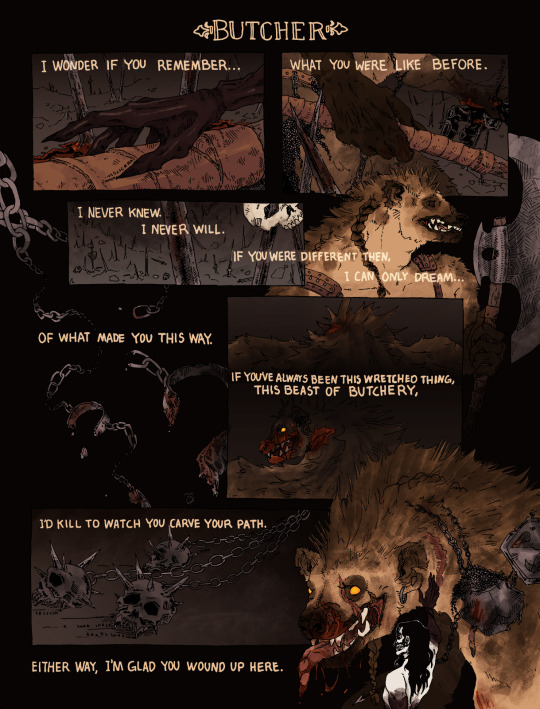#yeenoghu
Text
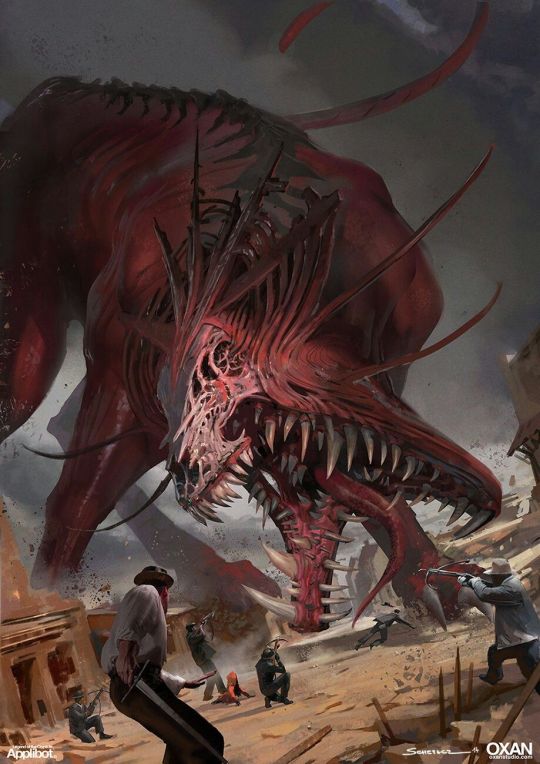
Monsters Reimagined: Yeenoghu, Demon Lord of Insatiable Hunger
It's been some years since I did my overhaul on the lore of the gnolls and how they embody the weird de/humanization that goes on with various monsters over d&d's history. Ever since I've had more than a few folks write in asking about how I would handle the default Gnoll God Yeenoghu, who exists in a similar state of "Kill everything that ever existed" to Orcus and a good portion of the game's other late game threats, thematically flat and not really useful for building stories around.
For a while I've avoided doing this post because I thought it might skew a little too close to my personal philosophy, and risk going from simply being influenced by my views to an outright soapbox. I personally hold that despite being part of our nature hunger is the source of the majority of human cruelty, and if society and cooperation are the tools we developed to best fight against the threat of famine, it is fear of that famine that allows the powerful to control society and secure their positions of privilege.
I've also dealt with disordered eating in a prior period of my life, alternating between neglecting my body's needs and punishing myself for needing in the first place. I'm well acquainted with hunger and the hollowing effect it can have, though I'd never claim to know it so well as someone who went hungry by anything other than choice and self hatred.
Learning to love food again saved saved my life. The joy of eating, of feeling whole and nourished, yes, but there was also the joy of making: of experimenting, improving, providing, being connected to a great tradition of cultivation which has guided our entire species.
If I was going to talk about an evil god of hunger, I was going to have to touch on all of that, and now that it's out in the open I can continue with a more thematic and narrative discussion on the beast of butchery below the cut.
What's wrong: Going by the default lore, there's not much that really separates Yeenoghu from any other chaotic evil mega-boss. He wants to kill everything in vicious ways, and encourages his followers to do the same. He's there so that the evil clerics can have someone to pray to because the objectively good gods are on the party's side and wouldn't help a bunch of cannibalistic slavers.
This is boring, we've done this song and dance before, and the only reason that there are so many demon lords/evil gods/archdevils like this is because the bioessentialism baked into the older editions of the game's lore was also a theological essentialism, and that every group had to have their own gods which perfectly embodied their ethos and there was no crossover whatsoever, themes be damned.
Normally I'd do a whole section about "what can be salvaged" from an old concept, but we're scraping the bottom of the barrel right from the inset. Likewise my trick of combining multiple bits of underwritten d&d mythology to make a sturdier concept isn't going to work as most of d&d's other gods of hunger or famine are similar levels of paper thin.
How do we fix it: I want Yeenoghu to be the opposite of the path I found myself on, a hunger so great and so painful that it percludes happiness, cooperation, or even rational thought. Hunger not as a sumptuous hedonistic gluttony but a hollowing emptiness that compels violence and desperation. More than just psychopathic slaughter and gore, it is becalmed sailors drinking seawater to quench their thirst, the urban poor mixing sawdust and plaster into their food because their wages are not enough to afford grain.
This is where we get the idea of Yeenoghu as an enemy of society, not because violence is antithical to society ( I think we've learned by now how structured violence can really be) but because society fundamentally breaks down when it can't take care of the people who provide its foundations. Contrast the Beast of Butchery with one of my other favourite villainous famine spirits: Caracalla the grim trader, who embodies scarcity as a form of profit and control in to Yeenoghu's scarcity as suffering.
Into this we can also add the idea of the hungry dead, ghouls yes but also vampires, anything cursed with an eternal existence and appetites it no longer has the ability to sate. A large number of cultures across the world share the idea that the dead cannot rest while they are starving, which is why we leave offerings of food by their graves or pour out a glass to the ones we lost along the way.
On that topic, there's also a scrap of lore involving Doresain god of ghouls, who has been depicted as an on and off servant of Yeenoghu. Since I'm already remaking the mythology, I'd have Doresain act as a sort of saint or herald for the demon lord, the wicked but still partially reasonable entity who can villain monolog before the feral and all consuming demon god shows up.
Summing it all up: Yeenoghu isn't a demon you wittingly worship, it's a demon that claims you, marks you as its mouthpiece and through you seeks to consume more of the world. It gives you just enough strength to keep on living, keep on suffering, keep on filling that hole in your belly and feed it in turn.
The greatest of these mouthpieces is Doresain, an elf of ancient times who's unearthly hungers elevated him to demigod status. Known as the knawbone king, he dwells within a dread domain of the shadowfell, and is sought out only for his ability to intercede with the maw-fiend's rampages.
Signs: Unnaturally persistent hunger pangs, excessive drool and gurgling stomach noises, the growth of extra teeth in the mouth, stomachs splitting open into mouths.
Symbols: An animal with three jaws, a three tailed flail or spiked whip. A crown of knawed bones (Doresain)
Titles: Beast of butchery, the maw fiend, the knawing god
Artist
532 notes
·
View notes
Text

Yeenoghu, Gnoll Lord, The Ruler of Ruin! A 14 ft (4.3 m) demonic gnoll, what you see is what you get. A giant bloodthirsty hyena-like titan who simply wishes to bring destruction! Well, he does have a few tricks. He's telepathic, and can magically turn invisible or cause fear a few times per day. He's also incredibly intelligent. But I stick by what I said, as he usually actively chooses to ignore trickery and intellect, valuing the primal, beastial, and uncivilized. But if you're in for a very rough and wild time, this might be for you!
96 notes
·
View notes
Text

SOME ILLEGIBLE RAMBLES AND REFLECTIONS: THE DEAD THREE
Finished my first/main playthrough of Baldur’s Gate 3, and it’s had me turning over all sorts of ideas tied to Dungeons and Dragons lore. A bunch happens to be about cosmology so I'm slapping together one post about the Dead Three and a follow-up about deities more generally.
Buckle up if you decide to proceed dudes. This is chunky and opinion/interpretation heavy.
CW for mention (not extensive) of graphic violence and sex crimes during discussion of Bhaal and Yeenoghu.
MYRKUL
I get that there are multiple death-affiliated deities in DnD. Our buddy Jergal is the end of all things and the original incarnation of the concept. Myrkul stands for the experience of dying, decay, necromancy, graves, bones, and the fear of mortality. Kelemvor rules over the dead. Orcus is a demon lord and quasi-deity of undeath. Could prob go on.
I've read many different incarnations of death over the years. To set the stage on my Myrkul read, it bears mentioning that Terry Pratchett's Death is probably my favorite. I don't have it in me to see death as something totally malicious. It's very natural, and I tend to imagine that if there were to be an incarnation embodying it this persona would have an intimate view of all the love and grief, vulnerability and intimacy, ugliness and solitude, etc. that mortals deal with. Death has witnessed the end every living being faces, from the dawn of creation until now. Even if it isn't consciously accessed at all moments, death is ancient and experienced and not likely to be shocked by what mortals are capable of anymore. Mortals are small. Uncountably numerous though we are we are far outnumbered by the unliving. What are lives next to planets, to stars? Here I'd argue against assigning value according to how big or small something is, how eternal or how brief, how simple or complex. Everything that is, is a universe unto itself and deserves the gravity of that. It is also very mundane at the same time. To me, death needs to be able to balance the preciousness and commonality of life, of existence, on the tip of its scythe. Death needs to be able to deal with the most depraved beings to exist, but also with every beloved pet put to sleep. Every lost child or parent. Everyone who dies surrounded by loved ones and everyone who dies alone.
Initially, even knowing Myrkul in particular had been a mortal necromancer and not of particular moral standing--I had mixed feelings about him being the evilest of evil skeletons. He worked it well, but the idea of any aspect of death (or any character tbh) being flat evil felt off to me. Especially with 'we're all the protagonists of our own stories' being at work. People don't often look at what actions they'd consider to be evil then go 'I'm going to make myself that on purpose'. Disregarding morality maybe, but being evil on purpose is weird.
So I looked into further lore about Myrkul. One spot that gave me pause was that Myrkul as death (rather than the adventurer Myrkul Bey al-Kursi he’d once been) revels in inspiring fear of death and driving home experiences of loss. From what I found he isn't focused on the name of the individual holding the office of death, but for the force itself being feared. He can be bribed, and he will allow for necromancy/resurrections--but the fear and gravity of death is a sacred thing to him. Disregarding that is a pretty good way to get onto Myrkul's shitlist.
I want to take a moment to emphasize the importance of Myrkul focusing on his portfolio over his own ego. That is far from a given in the DnD pantheon, and like I said he's a former mortal himself. It wouldn't be out of the question for him to be a petty and insecure deity. He could have been the sort of guy where becoming a god of death by itself wasn't enough power. If Myrkul was a different person, he might have wanted people to stroke his ego and say how strong he is. He might have been someone who felt inadequate as a god without that affirmation. He could have (as a character) been unsatisfied and forever wanting/dependent upon the views of others to define himself. The fact that he DOES focus on death and decay as forces rather than himself is a big deal in reading him imo.
Anyway. Myrkul's emphasis on death as something feared got me thinking about what would cause a person to put such weight on death being understood in its negative aspect. It struck me that this is actually a very common and even important thing. You don't need to demonize death to see it, either. If you value life as sacred, the idea of life being treated as cheap or disposable is horrifying. When you love something dearly, the idea of that beloved thing being defaced is beyond outrage. It's a kind of sacrilege. People who kill as casually as breathing, who revel in the permanent destruction of someone else, become a source of horror. The absence of love creates a sort of cruelty that can't even perceive itself. And it's not uncommon for human beings in particular to partake in this. Humans dance on the graves of those they deem enemies not because they're relieved to be safe, but because they glory in the end of other lives. They don't recognize that anything of value was lost. There is no tragedy in death anymore. Every gentle moment, every vulnerability, every tragedy in their opponent's life is something to be crapped on and gloated over. There is no greater insult to life itself. Myrkul stands as a reminder that such behavior cannot stand. You can't treat life or death as cheap. To see something horrific and fail to realize the weight of its horror is itself a form of horror. The idea of a death that demands to be acknowledged for what it is, particularly by the living, imo actually denotes a level of care for life too. It might be harsh or ugly, but I don't know about evil. So while Myrkul is certainly flawed and often serves as an antagonist, I’d argue the function he performs is not only important but necessary.
And while it might vary between players, I found Aylin's enthusiastic executions and body defiling pretty uncomfortable. I understand she went through a lot and am fine with her as a character. But I think Myrkul's point stands if the audience feels even a moment of disquiet seeing her celebrate over the corpse of a broken person.
Some things are meant to be ugly.
BANE
Of the Dead Three I find Bane the most disturbing and dangerous tbh—but not for how Gortash invokes him. Way I see it, the other word for tyranny is authoritarianism on a macro-level, abuse on an individual level.
I’d argue that in life, we can only healthily control ourselves and our own individual actions/choices. We can try to persuade others or appeal to their judgment, but we can’t MAKE another person think or act how we wish. When folks attempt otherwise (individually or more broadly) it involves fear, force, deceit, or other forms of pressure. Coercion, enslavement. These fall under the umbrella of tyrannical practice to me. You treat another person as subhuman and strip them of agency.
We don’t live in a pure and ideal world. If a tyrannical person is committing crimes and denying others their free will through force, I wouldn’t call defense through force tyrannical as long as it wasn’t needlessly excessive. Power struggles exist. But the whole practice of using fear, force, deceit, or pressure to control another person is dangerous imo. They're to be utilized as little as possible.
In DnD I don’t think the fringe evil cults would be the ones most at risk for corruption by Bane. I don't think individuals or groups who prioritize self-indulgence would be most at risk, either. The most dangerous and frequent disciples of Bane imo would be within good alignment. This means followers of benevolent gods as well as the nations or groups that consider themselves to have righteous causes. ESPECIALLY those with chips on their shoulders.
When someone assumes they have and always will have the moral high ground, that they are incapable of committing injustice, that their end justifies whatever means, that it doesn’t count as abuse with the 'correct' target… that, to me, is where tyranny festers. The person convinced of their own moral infallibility is the one who sees no need for brakes and so cuts them without concern.
I’d argue everybody has a seed of tyranny in them that can be fed or starved. We feed that seed with our own indignation to become a tyrant victimizing others while still seeing ourselves as powerless. The person who first victimized you can still also be victimized by you. There isn’t a target that exists where finding joy in cruelty gets a pass.
Bane, I think, thrives on the idea that it's no problem if you're enforcing your will. Especially on people contemptible to you.
For DnD purposes, imagine you have zealous followers of idk Tyr. They are willing to do whatever it takes to enforce and spread their definition of justice. They believe in making examples of people at every opportunity. They torture, isolate, rob, and shame those they consider to be unjust or dangerous. If their victims are falsely accused—well. It’s for a noble purpose so the sacrifice is not in vain. And imagine Tyr abandons these followers as hypocrites. He no longer empowers clerics or paladins no matter how they cite scripture or brand ‘heretics’ with his symbols.
Bane doesn’t enter calling himself Bane, god of tyranny. Bane claims to follow a higher justice. Maybe he uses an avatar, maybe he chooses a Banite disciple, maybe he finds a true believer. But he argues that Tyr as an individual was never ultimately what those zealots stood for—it was justice itself. And if Tyr has turned traitor to his own portfolio, mortals need to go over his head to the core concept and implement that. Bane offers a name that suits his purposes and begins sourcing power to clerics and paladins instead. And throughout, as the zealots commit increased atrocities against those they deem dangerous or evil they fail to realize they’ve spiraled into evil alignment after all. They’d think they were either just as good as they’d always been OR BETTER. The compassion of Ilmater is spent on the depraved and corrupt as far as they’re concerned.
I think the real threat of Bane is that he should be 100% capable of corrupting an otherwise heroic party member if they aren’t wary of that capacity in themself. You suddenly find your friend who listened to your problems and supported you through awful shit mocking a person sobbing on the ground as they kick them. And that friend looks betrayed and hurt (or outraged) if you challenge their actions, because they think you should know exactly how disgusting this piece of shit is and how much they deserve the abuse. And even if you concede that individual case—it’s not the only one. The slights worthy of torment become smaller and smaller. A thought or word out of line betrays the ideology of an evil alignment, with the only solution being to beat thoughts and words out of the target until they can only repeat approved ideas back. And even then, it may not be enough.
If it was explicitly confirmed that the deity the zealot followed was Bane all along, the zealot might genuinely not believe it. They might get pissed at the very suggestion. What they do against the wicked isn’t tyranny after all. They’re righteous.
Denial doesn’t serve to disempower Bane in the least if tactics remain unchanged.
BHAAL
I’m holding off on more detailed Bhaal thoughts until I complete a dark urge run, but I’ve listened to lore on both him and the demon lord Yeenoghu recently—and I think there’s room for a really cool potential contrast.
Yeenoghu Lore
Providing this particular video link for the curious, as a way to help illustrate what I’m drawing from.
Yeenoghu holds the title as demon lord of slaughter. He glories in filth, rape, excessively graphic murder, torture, violence, and playing with corpses along the way. He’s meant to come across as a bestial, self-absorbed, remorseless desecrater. And when I say bestial, I want to draw attention to a particular IRL factoid that might be worth considering.
I love animals to bits. I don’t think animals generally contemplate morality the way humans do just due to cognitive differences and limitations. I also think it’s important to remember that humans are ALSO animals, so certain things umbrella’d under ‘human experience’ would probably apply to at least some animals too. If there are human altruists and human serial killers, we should be able to expect that animals likewise have some altruists and some serial killers within the scope of individual variation.
Cruelty is not exclusive to humans. Orcas will essentially torture smaller animals to death by flinging them into the air with their tails repeatedly like balls until repeated beatings and suffocation kill them. Dolphins commit rape and chew on live puffer fish to get high off the toxins. Chimpanzees are a horror unto themselves with cannibalism and mutilation and basically whatever atrocity they can commit. Wolves and cats sometimes hunt to excess just for the joy of it and don’t eat all they kill. Hannibal the swan (as a specific and notably homicidal individual) beat and drowned any other swans visiting his pond and showed his signet how to do it. I could go on. Some cases it might be a matter of the animal not having theory of mind to recognize that they are inflicting pain on another conscious creature. Other times, like with pissed off chimpanzees, they know EXACTLY what they’re doing and it’s on purpose to cause maximum suffering.
I think Yeenoghu should embody a little bit of both propensities. He’s just utterly self-absorbed and doesn’t give a fuck about the experiences or perspectives of other living things except insofar as they impact him.
Bhaal I want to research more like I said, but one thing I remember from my initial play through was finding a note from the Dark Urge to Orin.
Little sister, whatever in the Gray Wastes are we going to do with you? Bhaal will never care that you waste your time, posing your corpse-dollies. Bhaal doesn’t care whether you give him the corpse of a pauper or a king. At the end of the day, all Father wants is death in droves, death in numbers. To sap away the life of this dull world as swiftly and widely as we can. You plan, you plot, you prevaricate, and you waste his time. Bhaal doesn’t need us to think. He needs us to kill. You kill beautifully, and have talents in your shapes’ magics that I never will. But you do not understand Lord Bhaal. Perhaps it is a failing of your diluted blood, as a mere grandchild. I am his sole living pureblood. I will accept no challenge from you, until you show some damned respect.
To be honest this is interesting af to me because it positions Orin a bit more in-line with Yeenoghu’s modus operandi in some ways. But what sets apart the principles of Bhaal from Yeenoghu or Myrkul?
The Dark Urge suggests the goal of Bhaal is the extinction of all life, but to be honest I’m a bit skeptical. Seems like short term thinking. Even if Bhaal pulled that off, once it’s done there is no more murder or god of murder for that matter. If Bhaal is aiming for a cessation of existence and wants everyone else along for the ride maybe that’s what he’s after, but I dunno. That seems like something fans/players/loremasters would have touched on before.
I’d like to invite this possibility for foiling instead:
Life consumes other life by nature. Animals, plants, fungi, bacteria, so forth—it isn’t just a matter of philosophy. One life cannot exist without destroying another. We need to eat. If we don’t, we die well before reproduction enters the picture. But it’s more than that… you take a step, you kill countless tiny organisms you aren’t even aware of. You swat a fly. You hit something with your car. You move gracelessly or touch carelessly, and catastrophe ensues. Etcetera.
It is inevitable that your existence will mean the end for the life of another living thing. That’s just how it goes.
It could be interesting on a LOT of fronts (both as members of the dead three and as former adventuring companions) if Bhaal acted as a kind of philosophical opposite to Myrkul the way I previously described.
If the Dark Urge’s note is to be trusted, Bhaal has no interest in ritual or glorified death per se. Bhaal would be more about the mundanity that comes through the act of killing. Life is fragile as-is and often ended by accident. Killing in its most common form is thoughtless and unconscious. To Bhaal, if every life is a universe then the universe looks meaningless. There is no importance or fanfare to any of it. If one side is ‘everything matters, give weight to life and death’, Bhaal would be ‘nothing matters, we are not capable of affording reverence to every single life and death we encounter’. More specifically, the mass deaths Bhaal favors would be a kind of illustration of the uncaring and casual relationship living things have with killing other living things. The more casual and effortless it is, the more I’d imagine it serves Bhaal. Sadism and revelry miss the point—there is no hierarchy. Suffering is inconsequential. Fear is inconsequential. Instinct is inconsequential. To live is to kill by Bhaal’s logic.
It isn’t limited to murder in the sense of a member of one species killing a member of the same species. It’s more Bhaal is the god of killing. He’d gain power from murder too sure, but also hunting, harvesting, and butchering.
With these interpretations in-mind, we can actually figure out how the Dead Three might have answered Jergal's question about what worth a mortal life holds. With the disclaimer this is very much conjecture.
I think Myrkul would likely be "Each life is of infinite value and merits sacrificing everything for." That lends life a heavy weight and makes death a fearful force for all. It would also mesh with Ketheric as his chosen.
Bane would lean into "That depends on a person's deeds", "The only life that matters is mine", or "Depends on the mortal". From those positions, the speaker argues for a hierarchy of life where some is more expendable than the rest. It's easier from that position to slide into adopting a role as judge and executioner, and from elevating yourself into a role of authority where other voices and experiences count less than your own.
Bhaal I think is reflected in "Life’s only value is as currency. Doesn’t matter to me otherwise", "The only life that matters is mine", or "No one life is worth more than any other. We are equal." Bhaal has the implicit question in-turn: what is the blood-price of your own life? How much have you claimed in your own name to keep moving? It's kind of the belief that while "The only life that matters is mine" is Bhaal's answer, every other living thing should be answering the same way.
There's more nuance than that of course, and likely truth falls somewhere in the middle. We aren't mentally capable of giving reverence to every death, but we can recognize in general terms and do our best case-by-case. We have a right to protect ourselves and what we love, but others share that right.
Feel free to offer different stances or thoughts though, and if you made it this far goddamn thank you for reading this monster.
146 notes
·
View notes
Text

Token for the Shoosuva demon. Hyena-like demons serving the demon lord Yeenoghu. Shoosuvas are gifted to powerful gnoll warbands after great victories.
7 notes
·
View notes
Text
Top 4 get in!
#monsterfucker showdown#polls#dnd#dungeons and dragons#d&d#baldurs gate 3#demogorgon#bronze dragon#white dragon#yeenoghu#marilith#kyuss#red dragon#baphomet#orcus
16 notes
·
View notes
Text
Mini Dump pt whatever



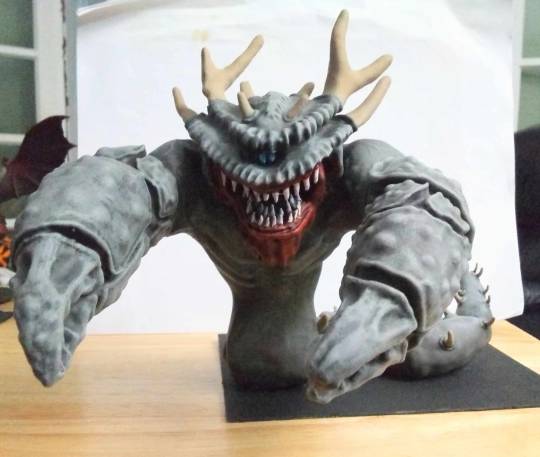

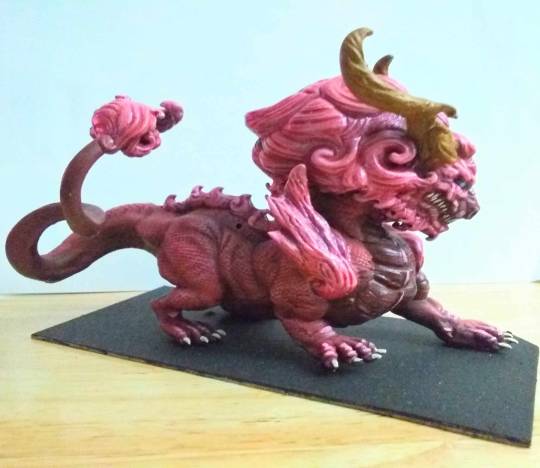

#DnD#miniatures#dnd miniatures#nyarlathotep#yeenoghu#pink dragon#astral dreadnought#atropal#painted miniatures#warhammer#nagash#warhammer nagash
14 notes
·
View notes
Text

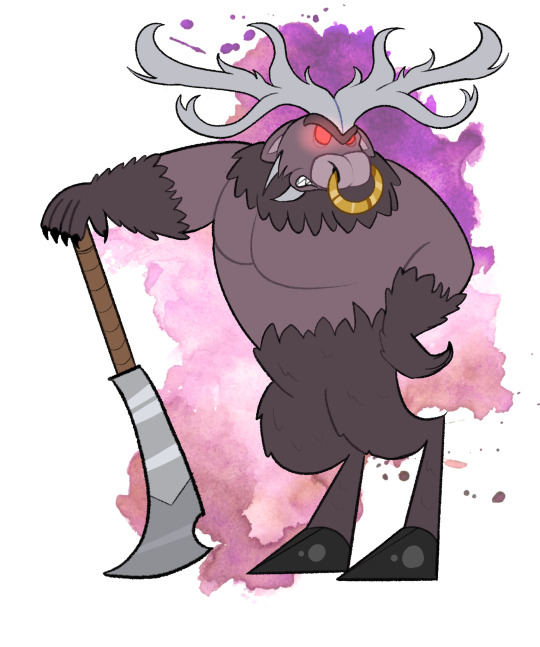
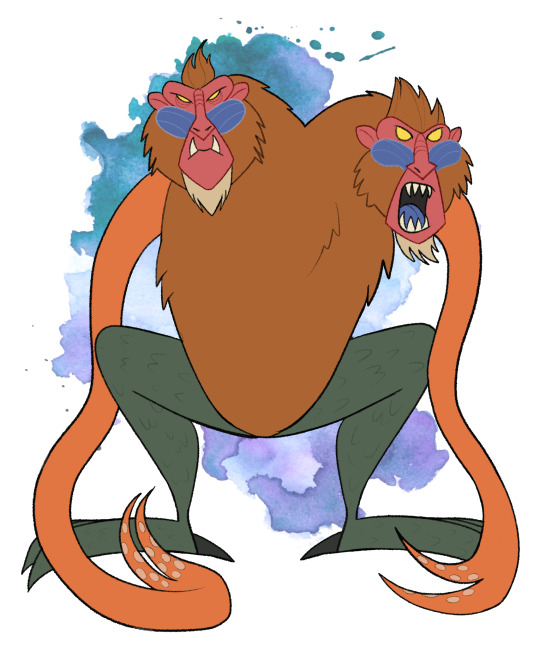
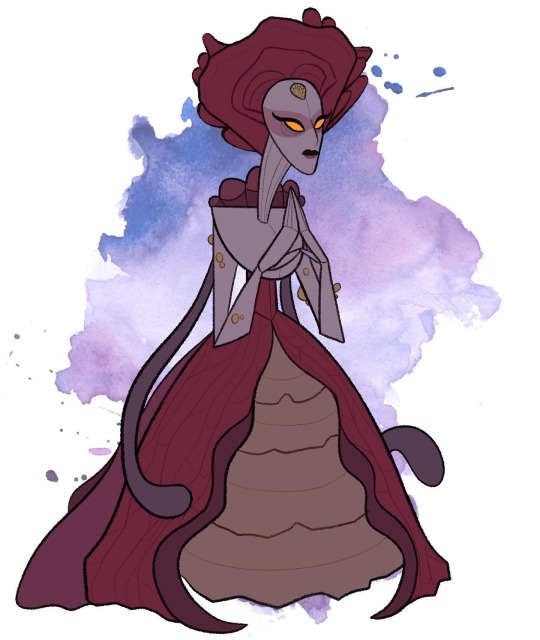
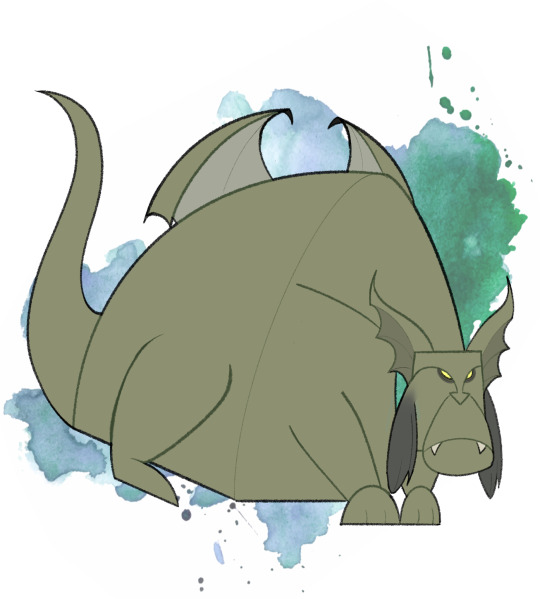
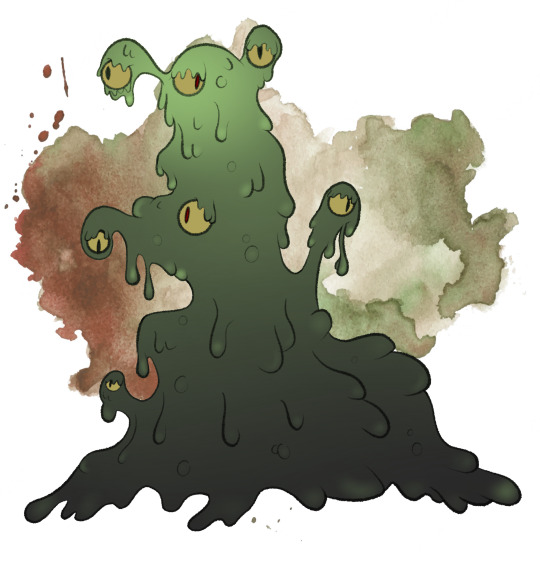
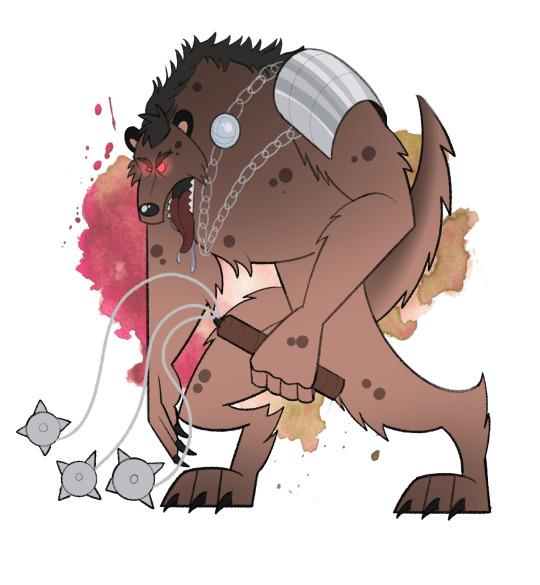

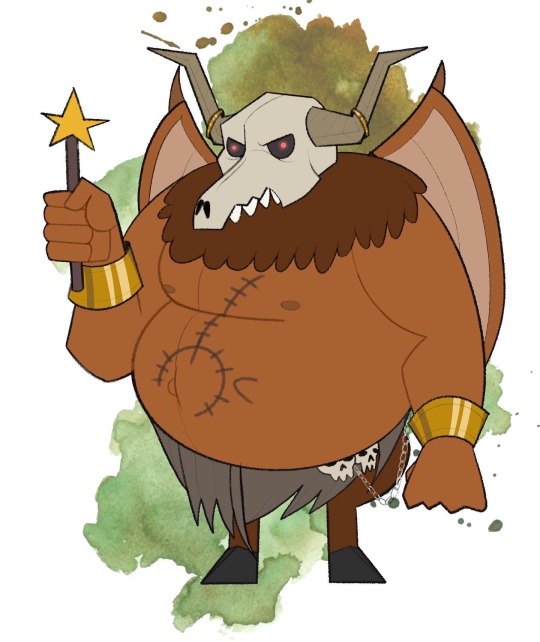
Bringing in the new year with some cartoony demon lords!
From left to right(ish): Yeenoghu, Juiblex, Demogorgon, Orcus, Zuggtmoy, Grazzt, Baphomet, and Fraz-Urb’luu
#Don’t talk to me about demogorgon#cartoons are fun#DnD#dungeons and dungeons#DnD art#out of the abyss#grazzt#demogorgon#juiblex#zuggtmoy#baphomet#yeenoghu#orcus#fraz-urb’luu#demon lords#abyss#demon#art
63 notes
·
View notes
Text

The Ruler of Ruin
13 notes
·
View notes
Text
Gnoll Lord Yeenoghu

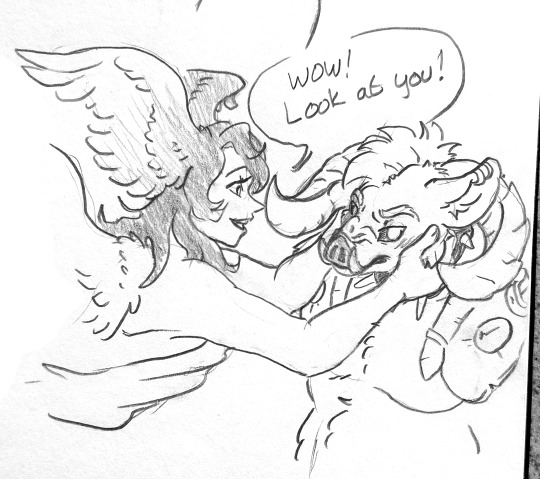
So you ever look at a character from a specific franchise and you feel a bit bummed out with the wasted potential they have?
Yeahhhh, this happened to me once I learned about Yeenoghu.
Now make no mistake, I can appreciate a bad guy if it is done right, but since it felt so plain for me, I decided to pick Yeen up and make him my own skrungly in my own Devilman AU.
Basically, this is my take on him and a few changes in his backstory.
Hope I ain’t doing a crime here .w.
(Special thanks to @amyfartsart for drawing my bois in the second picture :3)
Backstory:
Personality wise, Yeenoghu is still what you would expect from being the oh so called “lord of the gnolls”. He’s brutal, rude, gross, gluttonous and loves a good fight; but oddly enough, underneath his chaotic nature, he’s actually a bit of a lone warrior. It’s pretty rare to see him with company of somebody else, and his apparitions across the demon world are so rare, some believe he might be just a legend to scare off others or a ghost from the past.
But no, Yeenoghu is still alive and kicking. He’s just very good at hiding.
Despite being almost non-existent, however, the lord of the gnolls (or, the god of stench, as he sometimes goes by) has a terrifying ability in him. It is called Fang Of Yeenoghu. It basically involves injecting someone with the venom that radiates from his boar fangs, and whoever gets bitten suddenly goes into a blood-fueled frenzy, acting like a rabid beast until finally dying; either out of recklessness or exhaustion. Although, rest assured. It's pretty rare for him to use it considering he tends to devour his prey as soon as he lays his teeth upon them.
However, Yeenoghu one day ended up losing this ability as he bit into a piece of heavenly metal coming from the weapon of an angel. The scrap stabbed one of his teeth, fully breaking it, and slowly starting to destroy his fangs. If it was kept stuck in there, his whole maw could be vaporized and even end his life.
Fortunately, the angel of death, Azrael, one day found him after some investigation regarding the mythical gnoll, and in an unexpected act of kindness, he removed the broken tooth out of his mouth; thus saving him.
Despite the loss of his dreadful venom and the slight sensation of shame it brings him, Yeenoghu and Azrael remain on friendly terms, despite how much he likes to bully the angel regarding his goofy yet innocent nature.
Random facts:
-Yeenoghu is around 14 ft tall.
-Despite how bad he smells, Yeenoghu actually likes to bathe in rivers, lakes or any small formations of water.
-He has spiked tails. Three of them in total.
-He can literally eat a whole Apatosaurus worth of meat.
-He has a human form, and it is quite attractive to the normal eye. Even seductive.
-He has goat legs, a boar nose as a snout with two tusks, and vulture wings.
#DnD people it's okay#I've finally fixed him#...Maybe I dunno#I don't think this even counts as DnD#Yeenoghu#azrael#my ocs#devilman oc#...again sorta#gnolls#my art
9 notes
·
View notes
Text
The Paladin's Oath

Meet Arin, a Human Paladin of the Oath of the Ancients who was once a simple farmer in the countryside, known for his acts of kindness and bravery in defending his village from gnoll attacks.
Arin's life changed forever when a pack of gnolls attacked his village, killing his family and destroying his home. Enraged and grief-stricken, Arin picked up his family's sword and fought back against the gnolls. Though he was badly wounded, he managed to drive them away and save the remaining villagers.
After the attack, Arin found himself questioning the purpose of his life. He sought guidance from the ancient spirits that he felt were watching over him and was called to take up the path of a paladin, dedicating himself to protecting the innocent and fighting against the forces of darkness.
As he began his training, Arin learned more about the gnolls and their demonic origins. He realized that the gnolls were not simply savage beasts but the result of the influence of the demon lord Yeenoghu. Arin knew that he must prevent the spread of this demonic taint and vowed to destroy any fang of Yeenoghu that he encountered.
Armed with his faith and his family's sword, Arin has traveled far and wide to combat the gnoll threat. He has become a fearsome opponent, striking down the gnolls with righteous fury and earning the admiration of those he has saved.
Despite his successes, Arin knows that the gnolls will continue to be a threat as long as their demonic master remains. He remains vigilant, always watching for signs of demonic influence and ready to act when the need arises. With his unwavering determination and unshakable faith, Arin will continue to stand against the darkness and protect those who cannot protect themselves.
Buy me a coffee if you'd like more stories
#DungeonsAndDragons#DnD#fantasy#paladin#gnolls#oathoftheancients#folkhero#Yeenoghu#roleplaying#tabletopgaming
23 notes
·
View notes
Photo

Sometimes you need a friend and sometimes they're from the 422nd layer of the Abyss.
#dungeons & dragons#dungeons and dragons#d&d#dnd#yeenoghu#ttrpg#warlock#teen titans#killer moth#meme#memes#funny#lol
22 notes
·
View notes
Text

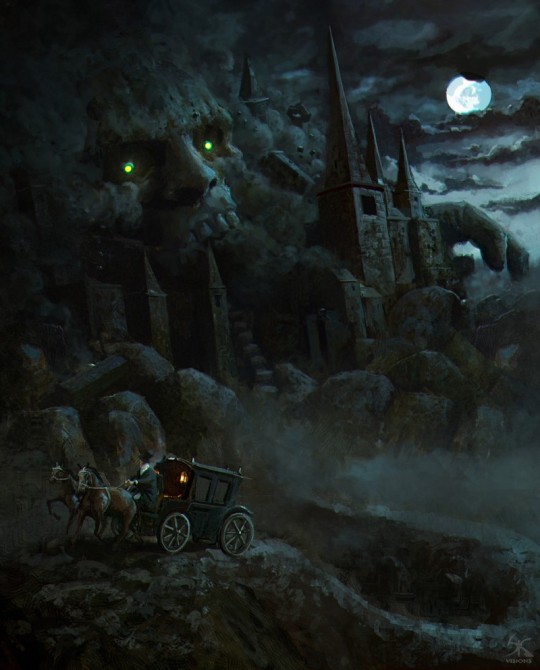
Mystery: Oh, How the Iron Coffin Hungers!
There's been a rash of graverobberies across the kingdom that have the authorities suspecting necromancy. For their part, the necromancer's guild has nothing to do with these crimes and is willing to hire your party to help clear their name. The investigation will lead you to through tombs, black markets, and haunted crossroads of the realm, as it becomes clear the culprits are seeking far more than coin or corpses at the bottom of those defiled graves.
Clues & Complications:
A missing body is usually a dead giveaway that a necromancer has been involved in a grave robbery, as most criminals only care about grabbing what valuables they can and wouldn't result to bodysnatching unless someone was going to pay them for it. How unusual then when a few of the bodies begin turning up days after they were exhumed, one in an abandoned cellar, one on the side of the road, and one in a completely different town, which may give a hint as to the culprit's movements.
Working for necromancers has its benefits, the guild is aware of the habits of the corpse trade (only in a theoretical sense, you understand, yes?) and can use their magic to extract information from the cadavers. Strangely enough it appears all the corpses bear the marks of previous magical questioning, hinting that it might be information the robbers were after, not flesh or treasure.
The bodies all belong to minor gentry or well-to-do merchants, the ideal targets for graverobbers who don't mind breaking into a tomb or fussing with a trap (both of which the party might have to do during their investigation) if it means access to better plunder. If the party press deeper however they'll notice a recurring symbol, on a ring or a tattoo or etched into the gravemarker, resembling the crudest sketch of a jawbone.
Just like it seems the party is getting answers, the corpses they've been trailing sit up and lunge for the nearest individual's throat, transformed by dark power into a rampaging ghoul. Chaos ensues as this awakening occurs not just with those corpses that have already been found, but also with those that were previously undiscovered as well as a half dozen or more random bodies scattered across the countryside. Though they seem too possessed with hunger to be capable of speech, if the party manage to restrain one of the ghouls and sate its unholy hunger, they may just get the last few clues they're looking for.
Background: In life all of the bodies belonged to a secret society known as the jawbone club, a bad pun on one of the first mystical objects they'd obtained; a crude weapon made from the skull fragment of some great beast, unearthed on one of their founder's estates by some adventurers clearing a nest of monsters.
Their association started a few generations before as a mostly innocent affair, a nameless but exclusive social lodge where those in the know could smoke and gamble and make the sort of back room deals that occupy much of the energy of the idly wealthy. Those who took an interest in the jawbone realized that whoever held it had greater luck in their personal affairs, in no small part because of the unlucky and sometimes disastrous circumstances that would befall their rivals. They became secretive, an inner circle within the lodge that took on more authority as their powers grew, understanding emerging that if they fed their blood to the jawbone it would grant them power.
Power does not spring from nowhere however, as the weapon was infact an artifact dedicated to the ghoul-saint Doresain, the avatar of a hungry and terrible demon god who was in turn feeding on the hungry ambitions of the inner circle. Unconscious impulses became whispers became visions, as the tithe of blood raised to sacrifices of flesh and fingers, because what was letting the razor teeth of some dead beast scar your body if it meant your hateful old uncle suddenly took ill just after rewriting his will to leave you his fortune.
Things came to a head with Catiro Wayte, the youngest and least favored son of a large noble family. The Wayte clan owned land and mills aplenty and were no strangers to ambition, Catrio and his siblings were practically weaned on it. So when the opportunity came to take hold of his fortune at the price of only a little pain Catrio was only too happy to pay it, and keep on paying so long as he had blood to let and skin to scar. After they'd come to understand what it could do the Jawbone Club had made rules about how often its members could make use of the artifact, fearing not only discovery but one of their number growing in power above the others. Catrio begged, bartered, and blackmailed to jump the line every time he could, hacking away a little more of himself each time, not giving his wounds time to heal up between sacrifices.
One night, when the itch of pride and avarice overwhelmed the pain in his infected flesh Catrio broke into the jawbone's sanctum. It was too late when the others found him in the morning , he'd carved open his belly looking for more of himself to cut away and had died with the artifact buried in his guts. Such heedless sacrifice opened a door for the ravenous hunger of the gnawing god, transforming Catrio's corpse into its mouthpiece, hungry and cruel. For all their resources the Jawbone club were unable to slay their former friend, instead sealing him in the lodge's basement and later an iron coffin they had constructed. They had a select number of their most trusted find a place to entomb Catrio's body (along with the bone it still clutched) in some unknown location and swore all the rest to secrecy, dissolving the jawbone club and swearing never to speak of it for the rest of their days.
The Culprit & The Consequences:
Catrio left much behind on that night he met his end, including a commonborn mistress and a daughter named Heliana only a few years old. One could theoretically source his ambition to his desire to make a place for them in the world, but that would be making things far too simple. Unrecognized by her father’s family and cut off from Catrio’s support Heliana and her mother ended up scraping to get by, with her ending up in the gravemaking trade out of one part practicality, one part wistful desire to perhaps one day find where her father was buried.
after nearly four decades after she and her mother were forced out on the street, Heliana’s crime spree began when by chance she found the first of the Jawbone marked graves. Remembering the stories her mother had told her about the club and its excesses, It took only a little convincing to have her fellow undertakers help her unearth the body, and a few charms learned from a travelling death priest to get the cadaver talking. After that it was just a matter of asking which corpse knew what, tracing her way through the postmortem ranks of the Jawbone club until she found out what had happened to her father and where his body lay.
Originally, all Heliana had wanted to do was give her father a proper burial alongside her some years dead mother, as she was told was always his wish. Plans changed when her father began to speak to her within the iron coffin after she’d unearthed it from its secret hiding space. Through the magic of the ghoul-saint he knew her, knew of her hungry years, and of the long dormant pride and ambition he’d handed down to her along with his blood: a desire to be recognized no matter the cost. He whispered a plan into her mind, a way for him to return to life and use the artifact he still carried to make everything as it should be. Naturally when they caught her agreeing with the corpse, most of Heliana’s muscle deserted her, and might give your party a much needed lead in their tall tales.
The animation of the other jawbone club members as ghouls was only a warning sign, a byproduct of Heliana breaking through the outermost layer of the iron coffin’s wards in preparation of something far more calamitous. Her father’s plan (or rather, the thing wearing her father like a mask) is to have Heliana burn the iron coffin along with her mother's bones in a ritual pyre at the heart of the Wayte estate. Catrio’s spirit will be free, devour the grounds (and his unwelcoming family) and use the power of the jawbone artifact to remake them all as they should be, with him as lord of the manor, united with his lover and child. While she’s more than willing to even the score with the people who denied her birth and threw her mother out on the street, why Heliana doesn't suspect is the horde of flesh eating undead and other malign spirits that will be unleashed should the ritual be allowed to finish.
Art 1 Art 2
75 notes
·
View notes
Text
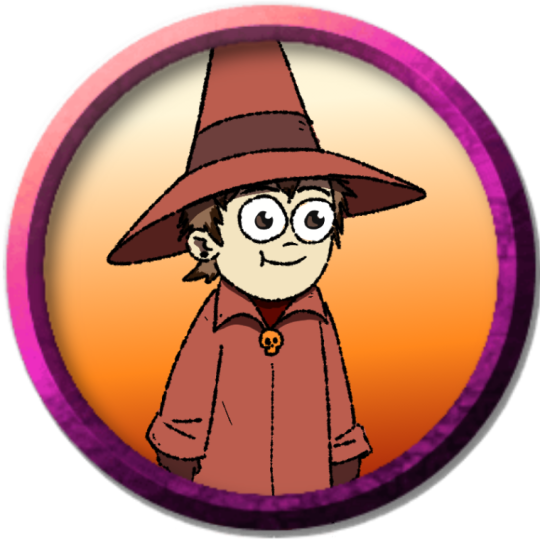
This'll take a bit to explain...
This is Shmarvin.
So there was this little wizard boy. The BTN's (my PC's), found him scared and alone and STUCK in a radius of 8 large stone obelisks. He had no recollection of how he got there or why or how long he'd been there. He didn't even remember his own name. He had a brief memory of something scary happening a long time ago. But it all made him very sad to think about.
The only sign of time was the destroyed ruins that seemed like a city in the nearby area.
Basically no one trusted this kid, but he had a funny voice, so they decided to help him. Our Paladin tried to help in a very wholesome way by finding food for the boy and keeping his summoned Felidar to protect him at night (bless his soul).
Fast forward through wheelin and dealin with an Archfiend (Mephisto) to break the curse and some hefty magic struggles. They managed to free Shmarvin! And to no one's surprise he transformed into a huge beasty demon. Uballithaux, servant of Yeenoghou.
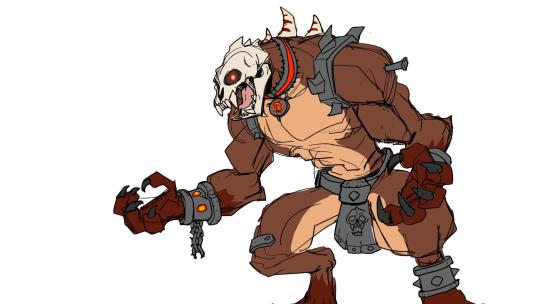
The BTN's managed to keep him in place and polymorph him into a slug to send him to the shadow realm with a little bit of Mephisto's help.
Anyway! all my personal art is going towards my dnd stuff recently and i'm very ok with this.
Here's the token for the Yeenoghu Balor. If you want a Hyena demon with no wings, take this png!

11 notes
·
View notes
Text
I’m doing dnd and we’re fighting yeenoghu.
At level five.
Two players.
And we’re a wizard and a Druid, whose only broken combo was taken from us.
We’re screwed, I thought, but then the other player summoned a shriek bat, and I summoned greater demons. We rode on the shriek bat too high for it to reach and it shrieked down. We called lightning. It was awesome. We killed yeenoghu and stole its eyeballs to make eyeball soup.
YEENOGHU EYEBALL SOUP. we’re only slightly insane!
6 notes
·
View notes
Photo
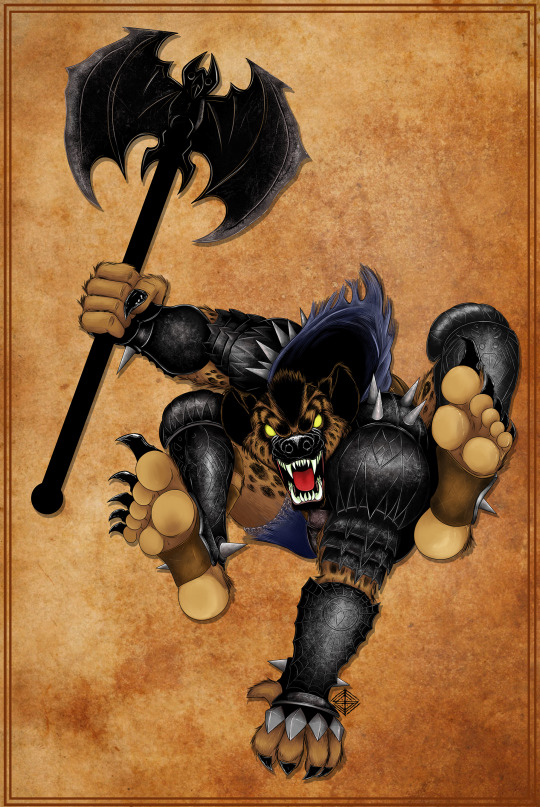
“Artur”
A Gnoll.
#gnoll#gnolls#yeenoghu#forgotten realms#dnd#dnd53#hyena#werehyena#hyenas#hyena art#anthro hyena#anthrohyena#fantasy art#jss1#gnollface
38 notes
·
View notes
